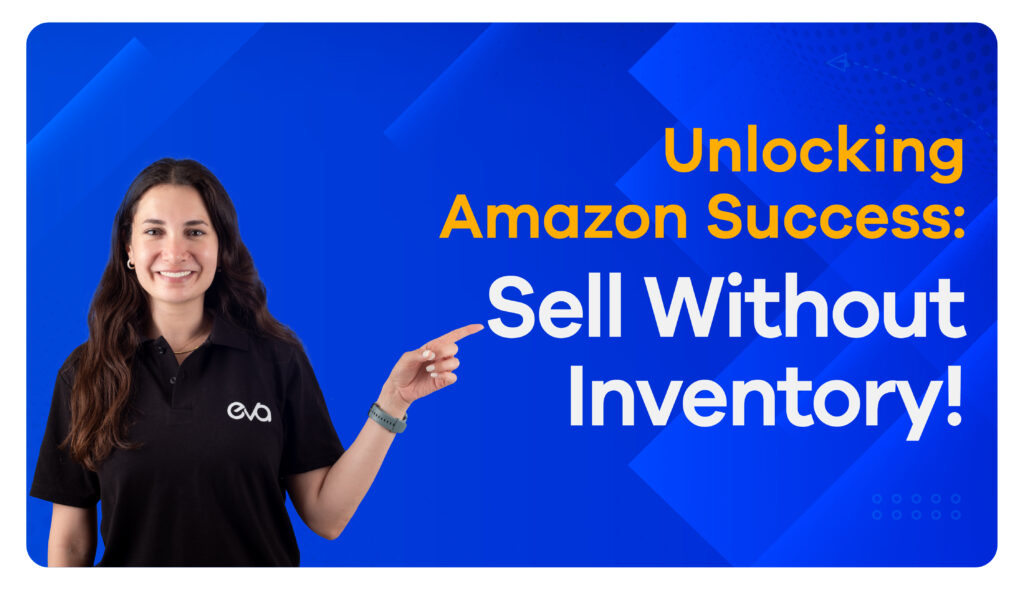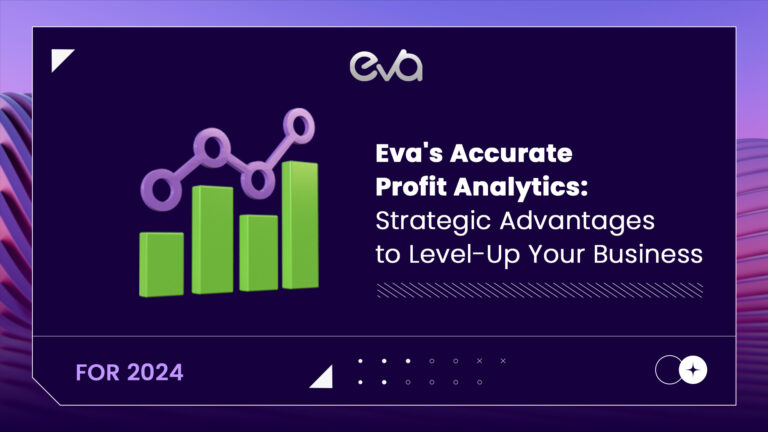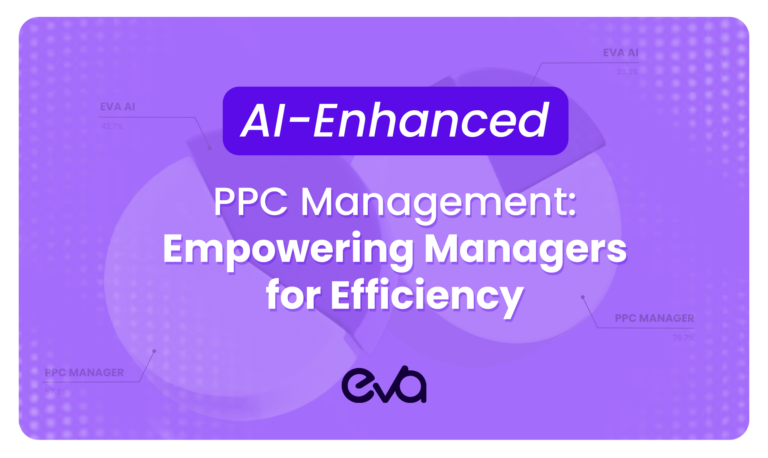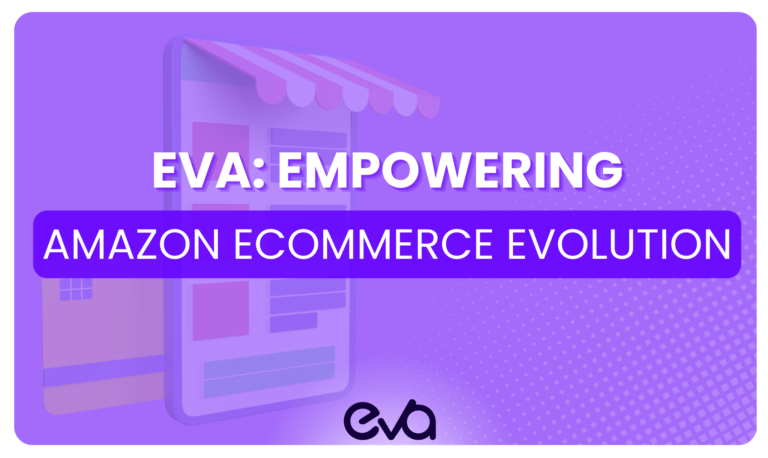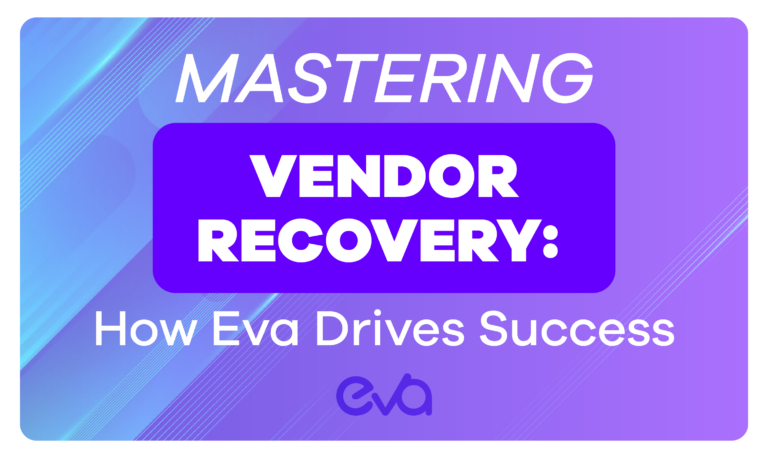Are you ready to unlock the potential of selling on Amazon without the burden of inventory? If you’ve been longing to dive into the world of eCommerce but find the idea of managing physical stock overwhelming, you’re in the right place.
This comprehensive guide will show you exactly how to sell on Amazon without inventory, equipping you with the knowledge and strategies to thrive in this competitive marketplace.
Discover the pros and cons of this business model, explore lucrative alternatives like print-on-demand and selling digital products, leverage the power of Amazon FBA for streamlined order fulfillment, navigate pricing policies, and gain insights from successful inventory-free sellers.
Let’s dive in and unlock the key to your Amazon success!
Table of Contents
- Inventory-Free Selling on Amazon At One Glance
- Benefits Of Inventory-Free Selling On Amazon
- Challenges of Selling on Amazon Without Inventory
- Intense Competition & Market Saturation
- Method 1: Sell Print-on-Demand Products on Amazon
- Method 2: Amazon FBA
- Method 3: Third-Party Logistics (3PL)
- Introducing Eva’s 3PL Service
- Method 4: Selling Digital Products on Amazon
- Method 5: Dropshipping on Amazon
- Method 6: Selling eBooks on Amazon
- Pros and Cons of Selling eBooks on Amazon
- Building a Brand with Inventory-Free Selling on Amazon
- Branding Strategies For Sellers Without Inventory On Amazon
- How To Differentiate Your Products & Create A Unique Brand Identity
- Optimize Your Product Listing on Amazon
- Conclusion
- FAQ | How To Sell on Amazon WITHOUT Inventory
Inventory-Free Selling on Amazon At One Glance
| Pros | Cons |
| Reduced upfront costs | Intense competition and market saturation |
| No need for inventory management | Limited control over shipping and returns |
| Flexibility and scalability | Reliance on third-party suppliers or fulfillment |
| Quick adaptation to market trends | Potential quality control issues with suppliers |
| Lower financial risk | Need for continuous market research and analysis |
| Focus on marketing and customer acquisition | Potential dependency on third-party platforms |
Method’s and Advantages
| Method | Amazon FBA | Print-on-Demand | Selling Digital Products | Dropshipping | Selling eBooks on Amazon |
| Fulfillment | Amazon handles storage, packaging, and shipping | Supplier handles production and shipping | Digital delivery | Supplier handles shipping | Digital delivery |
| Product Variety | Suitable for physical products across various categories | Suitable for custom products, apparel, accessories, etc. | Suitable for various digital products like e-courses, software | Suitable for physical products from suppliers | Suitable for written content in eBook format |
| Initial Investment | Requires upfront investment for product inventory | Minimal upfront investment for design files | Minimal upfront investment for digital product creation | Minimal upfront investment for product purchase | Minimal upfront investment for content creation |
| Scalability | Highly scalable with the ability to handle large volumes | Scalable as production is based on demand | Scalable with no limitations | Scalable with the potential to work with multiple suppliers | Scalable with the ability to publish multiple eBooks |
| Control and Customization | Offers more control over branding and product customization | Offers customization options for designs and products | Offers customization options for digital products | Limited control over product selection and customization | Offers control over content creation and formatting |
| Profit Margins | Profit margins can vary based on product costs and fees | Profit margins can vary based on product costs and fees | High profit margins due to low production and delivery costs | Profit margins can vary based on product costs and fees | Profit margins can vary based on pricing and royalty rates |
| Marketing Opportunities | Access to Amazon’s vast customer base and marketing tools | Limited marketing opportunities within Amazon’s platform | Broad marketing opportunities through various channels | Limited marketing opportunities within Amazon’s platform | Marketing opportunities through Amazon’s platform and beyond |
| Risks and Challenges | Inventory management, competition, and storage fees | Reliance on the supplier’s quality and production timelines | Intellectual property infringement and digital piracy risks | Supplier reliability, inventory management, and competition | Competition, marketing, and piracy risks |
Benefits Of Inventory-Free Selling On Amazon

In the following, You Will Learn How to Sell on Amazon WITHOUT Inventory by offering Digital products or Using FBA, 3PL, or Dropshipping methods. ⭐
One of the major advantages is the reduced upfront costs and inventory management. Unlike traditional retail models, you won’t need to invest a significant amount of money in purchasing and storing inventory.
This means you can start your Amazon journey with minimal financial risk and allocate your resources to other aspects of your business, such as marketing and customer acquisition.
Additionally, the inventory-free approach offers flexibility and scalability. With traditional inventory-based models, you’re bound by the limitations of physical stock.
However, when you leverage dropshipping, print-on-demand, or digital products, you can quickly adapt to market trends and test new products without the need for large inventory investments.
This agility allows you to seize opportunities, pivot your strategy, and expand your product offerings based on customer demand.
Benefit 1: Reduced Upfront Costs & Inventory Management
To make the most of reduced upfront costs and inventory management, it’s crucial to choose the right business model for your needs.
Dropshipping, for instance, allows you to fulfill orders directly from suppliers, eliminating the need for inventory storage.
Alternatively, print-on-demand enables you to sell custom-designed products without the need for upfront manufacturing or stock.
By leveraging these models, you can launch your Amazon business with minimal capital investment and focus on generating sales and customer satisfaction.
Benefit 2: Flexibility & Scalability
When it comes to flexibility and scalability, consider exploring niche markets or untapped product categories. Identify niches with high demand and low competition to increase your chances of success.
For example, instead of selling generic t-shirts, focus on creating unique designs for a specific target audience, such as pet lovers or outdoor enthusiasts.
By specializing in a niche, you can attract a dedicated customer base and differentiate yourself from competitors.
Challenges of Selling on Amazon Without Inventory
While selling on Amazon without inventory offers enticing advantages, it’s important to be aware of the challenges and considerations involved. One notable challenge is the intense competition and market saturation on Amazon.
With millions of sellers vying for customers’ attention, it can be challenging to stand out and attract buyers. It requires careful planning, effective marketing strategies, and a solid understanding of your target audience to gain a competitive edge.
To overcome the challenge of competition, invest time in market research and product differentiation.
Identify unique selling points for your products and craft compelling product descriptions and imagery highlighting their benefits.
Utilize keyword optimization techniques to enhance your product visibility in Amazon’s search results.
Additionally, leverage social media channels, influencer collaborations, and targeted advertising to reach and engage with your target audience outside of Amazon’s platform.
Intense Competition & Market Saturation
Another consideration is the limited control over shipping and returns. When you don’t have physical inventory on hand, you rely on third-party suppliers or Amazon’s fulfillment services for order fulfillment.
This means you have less control over the packaging, shipping process, and handling of returns. It’s crucial to partner with reliable suppliers or leverage Amazon’s fulfillment programs like FBA to ensure a positive customer experience and maintain your reputation as a trusted seller.
To mitigate the risks associated with shipping and returns, carefully vet your suppliers or fulfillment partners.
Research their reputation, read customer reviews, and request product samples to ensure quality and reliability. Communicate clearly with your partners to set expectations regarding packaging, shipping timelines, and return policies.
By providing excellent customer service and promptly addressing any issues that arise, you can build trust with your customers and establish a strong brand presence.
Method 1: Sell Print-on-Demand Products on Amazon
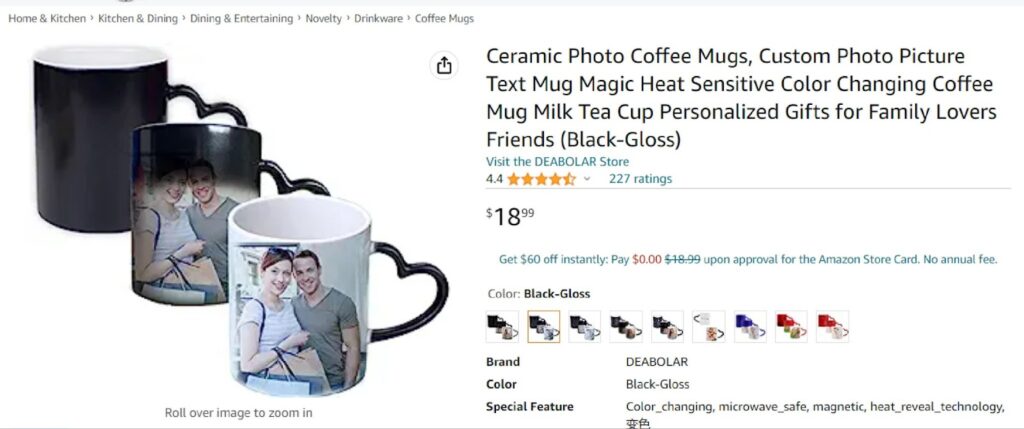
Before diving into the selection process, let’s first understand the concept of print-on-demand and its benefits.
Print-on-demand is a business model where products are manufactured only when an order is placed. This eliminates the need for stocking inventory, allowing you to offer various customized products without the risk of unsold items.
The advantages of print-on-demand include reduced upfront costs, no storage hassles, and the ability to offer unique and personalized products to your customers.
By partnering with a reliable print-on-demand supplier, you can focus on marketing and growing your Amazon business while leaving the production and fulfillment to the experts.
How to Choose the Right Print-on-Demand Supplier for Your Amazon Business
When it comes to selling on Amazon without inventory, leveraging print-on-demand (POD) services can be a game-changer.
With POD, you can offer a wide range of customized products to your customers without the need for upfront inventory investment.
However, choosing the right print-on-demand supplier is crucial to ensure product quality, timely delivery, and customer satisfaction.
Next, we’ll explore the key factors to consider when selecting a print-on-demand supplier and provide you with actionable tips to make an informed decision.
Key Factors to Consider When Selecting a Print-on-Demand Supplier
When evaluating print-on-demand suppliers for your Amazon business, several key factors must be considered. These factors will help you assess the supplier’s quality, reliability, and suitability for your specific needs.
Let’s delve into each of these factors:
1: Product Quality & Customization Options

One of the crucial aspects of a successful print-on-demand business is delivering high-quality products to your customers.
Ensure the supplier uses premium materials, employs state-of-the-art printing techniques, and maintains strict quality control measures.
Additionally, assess the range of customization options available, such as different product variations, colors, sizes, and printing techniques.
The more options you have, the better you can cater to your customers’ preferences and stand out in the marketplace.
For example, if you’re selling apparel, look for a print-on-demand supplier that offers various fabric choices, such as organic cotton or performance blends, and has a wide range of apparel styles and sizes.
This allows you to cater to different customer preferences and expand your target audience.
2: Production Time & Shipping Options
Timely production and efficient shipping are vital for a smooth customer experience. Evaluate the supplier’s production turnaround time to ensure they can fulfill orders promptly, especially during peak seasons.
Delays in production can lead to dissatisfied customers and negative reviews, impacting your Amazon business’s reputation.
Additionally, consider the shipping options provided by the supplier. Look for fast and reliable shipping methods that offer tracking information and reasonable delivery times.
This ensures that your customers receive their orders promptly and can track their packages, enhancing their overall shopping experience.
For instance, if your target audience expects fast shipping, choose a print-on-demand supplier that offers expedited shipping options or has fulfillment centers strategically located to minimize delivery times.
Tips for Evaluating and Choosing the Right Print-on-Demand Supplier
Now that you understand the key factors to consider, let’s explore some actionable tips for evaluating and selecting the right print-on-demand supplier for your Amazon business:
1. Request Samples: Before committing to a supplier, order samples of their products. This allows you to assess the items’ quality, printing accuracy, and overall aesthetics.
By personally examining the samples, you can ensure that the supplier meets your standards and delivers products that meet your customers’ expectations.

2. Research Customer Reviews: Customer reviews provide valuable insights into the supplier’s reliability and customer service.
Look for consistent positive feedback regarding product quality, timely fulfillment, and helpful support.
Be cautious if you come across multiple negative reviews concerning delayed shipments, subpar printing, or poor communication.
3. Evaluate Pricing Structure: While the cost shouldn’t be the sole determining factor, evaluating the supplier’s pricing structure is essential.
Compare the products’ base cost, additional customization fees, shipping costs, and any minimum order requirements. Ensure that the pricing aligns with your profit margins and competitive positioning.
4. Test Customer Support: Reach out to the supplier’s customer support team with questions or concerns.
Assess their responsiveness, knowledge, and willingness to assist. Effective communication and reliable support are crucial for a smooth collaboration.
Method 2: Amazon FBA

Amazon FBA is a service offered by Amazon that allows sellers to store their products in Amazon’s fulfillment centers.
When a customer places an order, Amazon takes care of packing and shipping the products on behalf of the seller. This service brings numerous benefits for inventory-free sellers.
Firstly, it relieves you from the burden of handling and storing inventory, saving you time and resources.
Additionally, by utilizing Amazon’s robust fulfillment infrastructure, you can offer fast and reliable shipping to your customers, enhancing their satisfaction and increasing your chances of winning the Buy Box.
As an inventory-free seller, you can take advantage of FBA’s scalability. Whether you’re selling a handful of products or have a rapidly growing catalog, FBA can handle the volume.
You don’t need to worry about storage limitations or hiring additional staff to fulfill orders. This scalability allows you to focus on other aspects of your business, such as product research, marketing, and customer engagement.
Sending Inventory To Amazon’s Warehouses
Getting started with Amazon FBA is a straightforward process. First, you’ll need to sign up for an Amazon seller account if you haven’t already. Once you’re registered, you can enroll in the FBA program.
Amazon will provide guidelines on preparing your inventory, including labeling requirements and packaging instructions. You can then ship your products to Amazon’s designated fulfillment centers.
When sending inventory to Amazon, following their guidelines is essential to ensure smooth processing. Properly label your products with the required barcodes and ensure they are packaged securely to prevent any damage during transit.
Tips For Optimizing FBA Usage
To make the most out of Amazon FBA as an inventory-free seller, optimizing your FBA usage is crucial. Start by implementing effective inventory planning strategies.
Regularly monitor your inventory levels to avoid stockouts or excess inventory, as both can impact your sales and profitability. Utilize Amazon’s inventory management tools to stay on top of your product quantities and reorder when necessary.
Additionally, consider leveraging Amazon’s FBA fulfillment reports to gain insights into your inventory performance.
Analyze metrics such as sales velocity, seasonality, and customer demand to make data-driven decisions. By identifying top-performing products, you can allocate more inventory to them and ensure consistent availability.
Another important aspect of optimizing FBA usage is managing storage fees. Amazon charges fees based on the space your inventory occupies in their fulfillment centers.
To minimize these costs, analyze your product assortment and identify any slow-moving or low-profit items. Consider adjusting pricing or running promotions to accelerate their sales and reduce the time they spend in storage.
Method 3: Third-Party Logistics (3PL)
In the dynamic world of eCommerce, selling on Amazon has emerged as a powerful platform for entrepreneurs to reach a vast customer base and maximize their sales potential. While traditional inventory management can be a complex and capital-intensive process, there are alternative methods that allow sellers to thrive without the need for physical inventory. One such method is leveraging the expertise of third-party logistics (3PL) providers.
In this section, we will explore how 3PL logistics can revolutionize your Amazon business, streamline operations, and drive success.
Benefits of 3PL Logistics
- Eliminating the Burden of Inventory Management
Managing inventory can be a time-consuming and resource-intensive task. With 3PL logistics, sellers can entrust inventory storage, order fulfillment, and shipping to experienced professionals. This frees up valuable time and resources, allowing sellers to focus on core business activities such as product development, marketing, and customer engagement. - Scalability and Flexibility
As your Amazon business grows, the ability to scale operations quickly becomes crucial. 3PL logistics providers offer the infrastructure and expertise to handle fluctuations in demand, peak seasons, and unexpected surges in sales. This scalability ensures that your business can adapt and meet customer expectations without the limitations of physical inventory. - Enhanced Efficiency and Cost Savings
3PL providers leverage their expertise and advanced technology to optimize order fulfillment processes. They employ efficient inventory management systems, automated order processing, and strategic warehouse placement to reduce shipping times and costs. By harnessing economies of scale, sellers can benefit from cost savings on storage, packaging, and shipping, ultimately boosting their bottom line.
Introducing Eva’s 3PL Service
At Eva, we understand the unique challenges faced by Amazon sellers in managing their inventory and fulfillment processes. That’s why we offer a comprehensive 3PL service tailored specifically for Amazon sellers. Our 3PL solution combines cutting-edge technology, seamless integration with Amazon’s systems, and a commitment to exceptional customer service.
Key Features of Eva’s 3PL Service:
- Efficient Inventory Management: Our state-of-the-art inventory management system ensures real-time visibility of your stock levels, allowing you to maintain optimal inventory levels and avoid stockouts or overstocking.
- Order Fulfillment Excellence: We handle the entire order fulfillment process, from picking and packing to shipping and returns. Our streamlined processes and dedicated fulfillment centers ensure fast and accurate order processing, enhancing the customer experience.
- Integration with Amazon: Our 3PL service seamlessly integrates with Amazon’s systems, enabling seamless order synchronization, inventory updates, and tracking information sharing.
- Customizable Solutions: We understand that every Amazon business is unique. That’s why we offer flexible solutions tailored to your specific needs, whether you’re a small seller or an enterprise-level brand.
To learn more about Eva’s 3PL service and how it can transform your Amazon selling experience, visit our website and take the first step towards a streamlined and profitable future.
Method 4: Selling Digital Products on Amazon
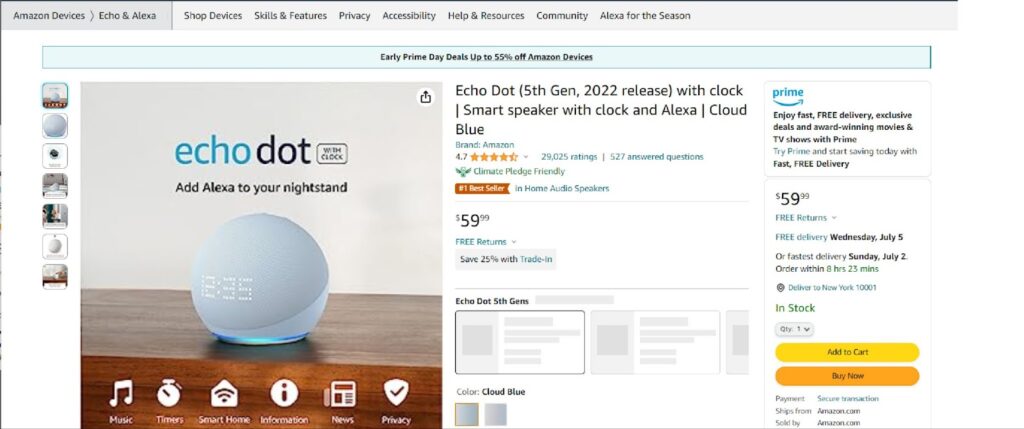
When it comes to maximizing profit margins on Amazon, selling digital products can be a lucrative venture. Digital products offer unique advantages, such as low production costs and unlimited scalability.
Next, we’ll explore the profitability of selling digital products on Amazon and provide you with actionable strategies to boost your revenue and increase your profit margins.
Exploring The Profitability Of Selling Digital Products On Amazon
This opens up a world of opportunities. The demand for digital content is constantly growing, from online courses to software and graphic design templates.
Unlike physical products, digital products require minimal production costs since they can be created once and sold repeatedly.
This allows you to enjoy high-profit margins without the expenses associated with manufacturing, inventory management, or shipping logistics.
Furthermore, as digital products can be instantly downloaded or accessed online, customers appreciate their convenience and immediacy.
Identifying In-Demand Digital Products & Niches
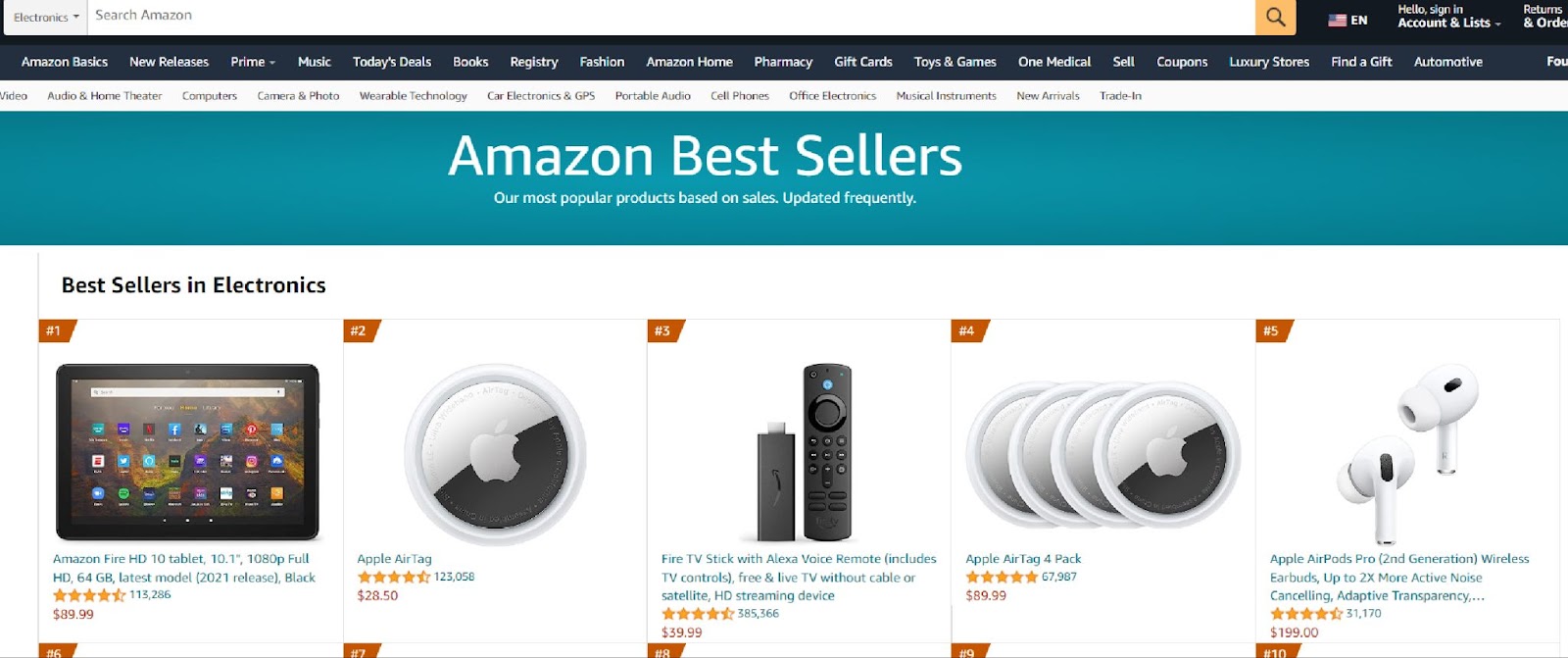
To maximize your profit margins, it’s crucial to identify in-demand digital products and niche markets on Amazon.
Start by conducting market research to understand customer preferences and identify gaps in the market. Look for a niche with high demand but limited competition, as this presents an opportunity for you to establish yourself as a leading seller in that space.
Additionally, pay attention to trending topics, emerging technologies, and evolving customer needs to stay ahead of the curve and tap into lucrative markets.
For example, suppose you’re interested in selling digital marketing courses on Amazon. Begin by researching popular keywords and topics related to digital marketing.
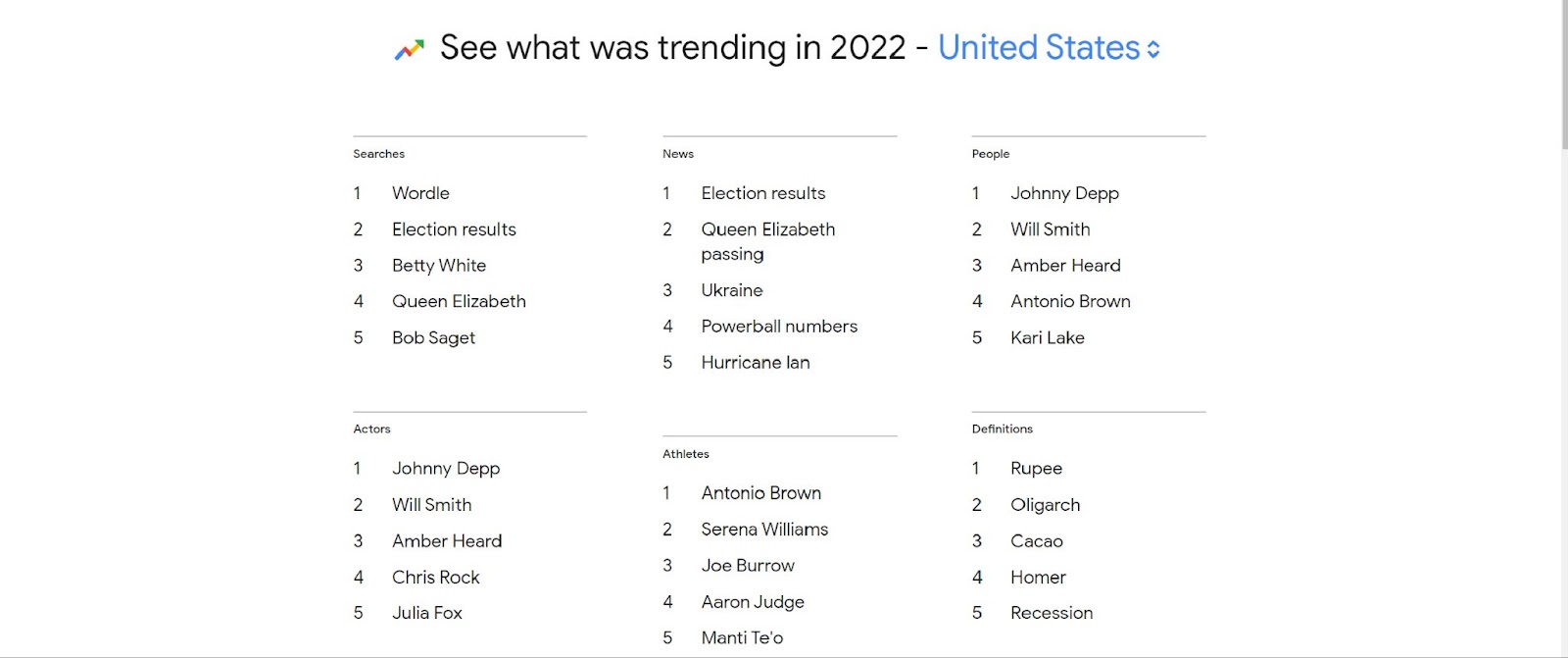
Use tools like Amazon’s search suggestions, Google Trends, or keyword research tools to identify specific areas within digital marketing that are in high demand. It could be topics like social media marketing, search engine optimization, or email marketing.
By identifying specific niches, you can create digital products that cater to the needs and interests of your target audience, increasing your chances of success.
Pricing Strategies & Leveraging Upsells To Increase Revenue

Pricing your digital products strategically is essential for maximizing your profit margins on Amazon.
While it may be tempting to set low prices to attract more customers, it’s important to find the right balance between affordability and profitability.
Consider factors such as your digital product’s perceived value, the competition level, and your target audience’s purchasing power.
Conduct price testing and experimentation to find the optimal price point that maximizes both sales volume and profit.
As an example, let’s say you’ve created an eBook on social media marketing. Consider the value and depth of the content you’re providing, the expertise and credibility you bring, and the prices of similar e-books in the market.
Consider offering different pricing tiers, such as a basic edition and a premium edition with additional resources or exclusive access to a private community. This allows you to cater to different customer segments and capture a wider range of purchasing behaviors.

In addition to pricing, leveraging upsells can significantly boost your revenue. Upsells involve offering complementary or premium digital products to customers after their initial purchase.
To implement effective upsells, understand your target audience’s needs and preferences. Study customer behavior and purchase patterns to identify logical upsell opportunities.
For instance, if customers are buying a beginner’s guide to email marketing, an upsell could be a comprehensive email marketing automation course.
Make sure to clearly communicate the benefits and value of the upsell, showing customers how it complements their initial purchase and takes their learning or results to the next level.
Method 5: Dropshipping on Amazon

Are you looking for a low-risk and easy-to-start method to sell on Amazon without the hassle of managing inventory? Dropshipping might be the perfect solution for you.
Next, we’ll introduce you to dropshipping as a business model and explain how it allows you to sell products on Amazon without the need for upfront inventory.
We’ll explore the profitability of dropshipping, highlight the best products for dropshipping, and discuss the pros and cons to help you make an informed decision and kickstart your journey as a successful Amazon seller.
Profitability of Dropshipping
Dropshipping has gained popularity among aspiring entrepreneurs for its potential profitability. The concept is simple: as a dropshipper, you act as a middleman between customers and suppliers.
When a customer places an order, you forward it to the supplier, who then delivers the order by shipping it directly to the customer.
The key advantage of dropshipping is that you don’t need to invest in inventory upfront, allowing you to focus on marketing, customer acquisition, and growing your business.
To determine the profitability of dropshipping, it’s crucial to consider factors such as profit margins, competition, and market demand.
While dropshipping can offer attractive profit margins, it’s important to select the right products and niches that have sufficient demand and reasonable competition.
Conduct thorough market research, analyze pricing trends, and identify products with healthy profit margins to ensure your dropshipping venture is financially viable.
Best Products for Dropshipping
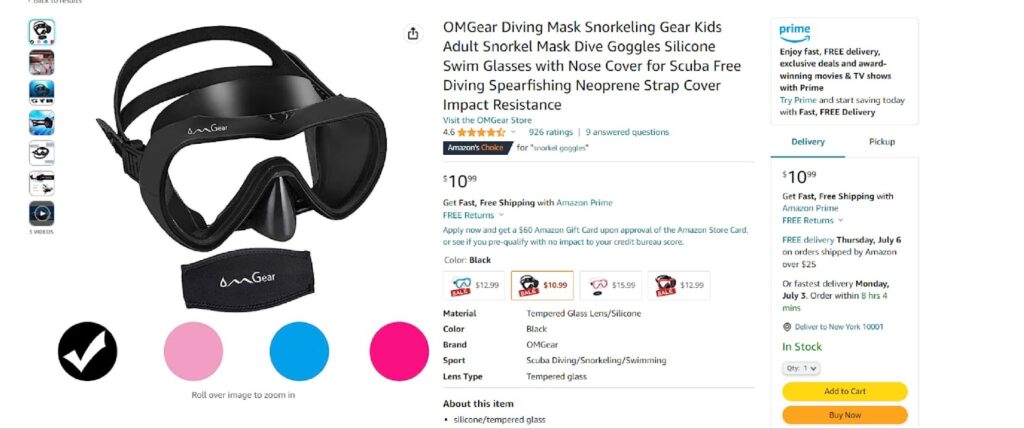
Choosing the right products is critical for dropshipping success on Amazon. While there’s a wide range of products available for dropshipping, certain categories tend to perform exceptionally well. Here are some product categories that are popular for dropshipping:
1. Niche and specialized products: Look for unique and hard-to-find items that cater to specific hobbies, interests, or needs. For example, personalized pet accessories or eco-friendly kitchen gadgets can attract passionate customers and create a loyal following.
2. Trending and seasonal products: Stay updated with the latest trends and seasonal demands. Products currently in high demand can generate substantial sales and profit opportunities.
For instance, during the summer, outdoor recreation products like inflatable pool floats or camping gear can be popular choices.
3. Home and lifestyle products: Items related to home decor, kitchen gadgets, health and wellness, and smart home technology are consistently in demand.
These products offer broad appeal and can attract a wide range of customers. Consider unique home organization solutions or eco-friendly household items to stand out in this category.
4. Fashion and accessories: Fashion items, including clothing, accessories, and jewelry, are perennially popular. Focus on unique designs, trendy styles, and high-quality materials to stand out in a competitive market. You can also consider niche fashion markets such as sustainable or ethical fashion.
Pros and Cons of Dropshipping on Amazon
Dropshipping on Amazon offers several advantages, but it’s essential to understand the potential challenges as well. Let’s take a closer look at the pros and cons:
Pros:
– Low startup costs: Dropshipping eliminates the need for upfront inventory investment, reducing your initial financial risk. You can start with minimal capital and gradually scale your business.
– Easy to start: With dropshipping, you can launch your Amazon business quickly without the complexities of product manufacturing or inventory management. Focus on building your brand and marketing your products effectively.
– Scalability: Dropshipping allows you to scale your business rapidly since you’re not limited by physical inventory or warehouse space. As your sales grow, you can handle a larger volume of orders without the need for additional storage.
Cons:
– Intense competition: Dropshipping has low entry barriers, leading to fierce competition. Popular products can quickly become saturated, making it challenging to stand out. Thorough market research and differentiation strategies are essential to succeed.
– Supplier reliability: Relying on suppliers to fulfill orders means choosing reputable and reliable partners. Inconsistent product quality or shipping delays can negatively impact your customer satisfaction and reputation.
– Limited control: Since you’re not handling inventory, you have less control over product packaging, shipping speed, and returns. Choosing suppliers who prioritize customer service and meet Amazon’s performance standards is crucial.
Method 6: Selling eBooks on Amazon

Are you passionate about writing or have valuable knowledge to share? Selling eBooks on Amazon could be the perfect avenue for you to monetize your expertise without the need for physical inventory.
Next, we’ll introduce you to the world of selling eBooks on Amazon and explain how it allows you to reach a global audience, generate passive income, and establish yourself as an authority in your niche.
Exploring the Profitability of Selling eBooks on Amazon
This has become an increasingly popular way for authors and content creators to generate income. The digital nature of eBooks eliminates the costs associated with printing, shipping, and storage, resulting in higher profit margins.
Furthermore, Amazon’s vast customer base and powerful marketing tools can significantly boost your book’s visibility and sales potential.
To assess the profitability of selling eBooks on Amazon, consider the following factors:
1. Niche and Target Audience: Identify a specific niche or target audience for your eBook. Niches with high demand and passionate readership can lead to greater sales and revenue.
For example, if you’re knowledgeable about personal finance, you could write eBooks on budgeting, investing, or debt management to cater to a financially conscious audience.
2. Pricing Strategy: Determine an optimal price for your eBook. While lower-priced eBooks may attract more impulse buyers, higher-priced ones can convey value and increase your revenue per sale.
Consider your target audience’s purchasing power, the length and quality of your content, and competitor pricing to find the right balance.
For instance, pricing it slightly higher can be justified if you’re offering a comprehensive guide with in-depth insights and actionable steps.
3. Marketing and Promotion: Effectively promoting your eBook is crucial for its success. Leverage Amazon’s marketing tools, such as Kindle Direct Publishing (KDP) Select, to maximize exposure. Enroll in KDP Select for promotional opportunities like Kindle Countdown Deals or Free Book Promotions.
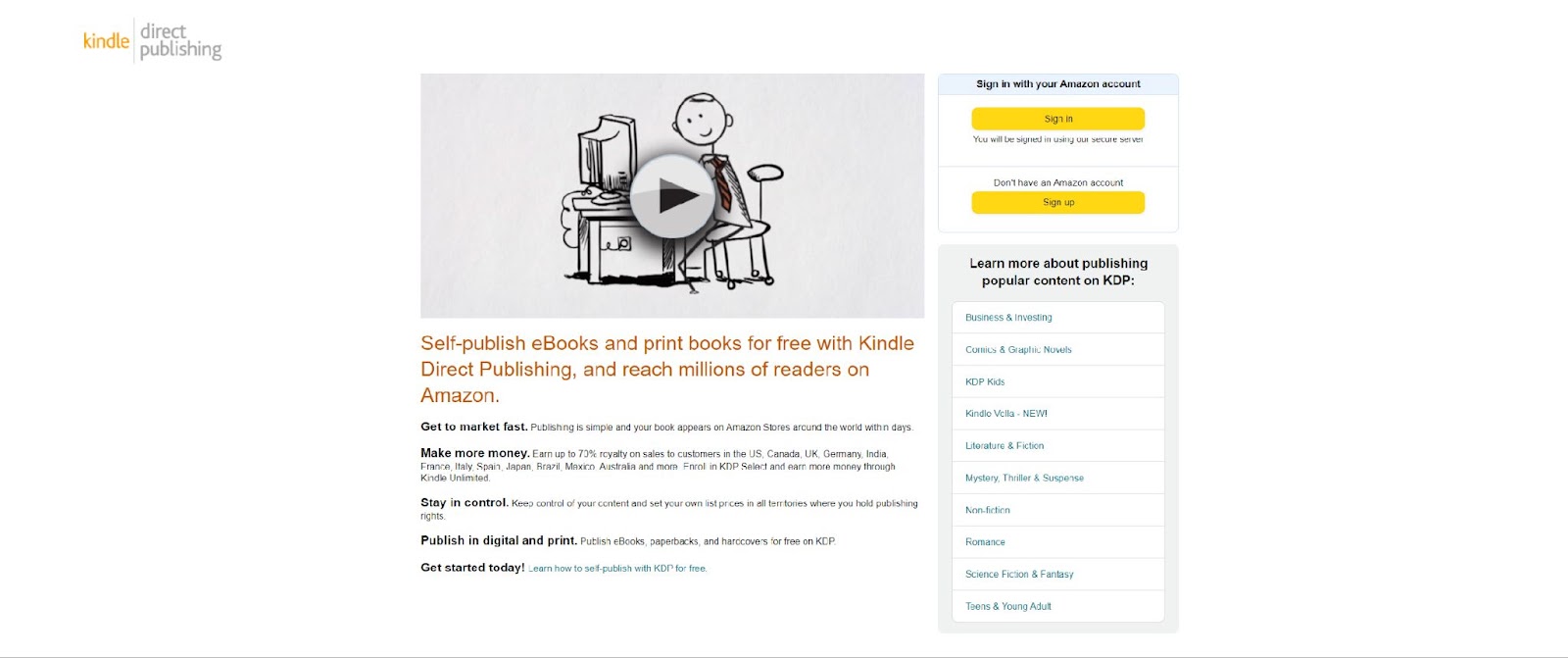
Additionally, invest in marketing strategies like social media promotion, email newsletters, book reviews, and collaborations with influencers or bloggers to expand your reach and attract potential readers.
Build an author website or blog to establish your online presence and engage with your target audience.
Pros and Cons of Selling eBooks on Amazon
As with any business venture, selling eBooks on Amazon has its own advantages and challenges.
Let’s explore the pros and cons:
| Aspect | Pros of Publishing eBooks on Amazon | Cons of Publishing eBooks on Amazon |
|---|---|---|
| Market and Competition | – Global reach and distribution, accessing millions of readers worldwide. | – Highly competitive market with millions of titles, requiring strategic marketing and exceptional content to stand out. |
| Costs and Investment | – Low costs and minimal risk with no need for printing, inventory, or shipping expenses. | – Pressure to offer competitive pricing, potentially leading to reduced profit margins. |
| Income and Royalties | – Potential for passive income through royalties from each sale. | – Variable royalty rates based on pricing and KDP Select enrollment, impacting overall revenue. |
| Platform Dependency | – Easy access to a massive platform for eBook distribution. | – Dependency on Amazon’s platform, limiting diversification and increasing vulnerability to platform changes. |
Building a Brand with Inventory-Free Selling on Amazon
In a highly competitive marketplace like Amazon, building a strong brand is essential for standing out and capturing the attention of potential customers.
As a seller without inventory, your brand becomes a critical factor in differentiating yourself from the competition. By implementing effective branding strategies, you can establish trust, loyalty, and recognition among your target audience.
Let’s dive into some key considerations and actionable advice to help you build a remarkable brand presence on Amazon.
Branding Strategies For Sellers Without Inventory On Amazon
When it comes to branding, sellers without inventory can leverage various strategies to establish their unique identity on Amazon.
One effective approach is to focus on storytelling. Craft a compelling brand narrative that resonates with your target audience. Share your brand’s mission, values, and the story behind your products. This emotional connection can help build trust and forge deeper relationships with customers.
Another essential branding strategy is to identify your target market and create a brand voice that aligns with their preferences and aspirations.
Whether you choose to be fun and playful, authoritative and informative, or luxurious and sophisticated, consistency in your brand voice across product listings, customer communications, and marketing materials is key.
How To Differentiate Your Products & Create A Unique Brand Identity
To stand out in a competitive market, it’s crucial to differentiate your products and create a unique brand identity.
Start by conducting thorough market research to identify gaps and opportunities within your niche. Look for unmet customer needs or underserved segments that align with your brand’s strengths and capabilities.
Once you’ve identified your unique selling proposition (USP), focus on highlighting it throughout your product listings.
Clearly communicate the value and benefits your products offer, emphasizing what sets them apart from others in the market. This could be through innovative features, superior quality, eco-friendliness, or any other aspect that resonates with your target audience.
Additionally, consider incorporating branding elements into your product packaging and design. Create visually appealing and cohesive packaging that reflects your brand’s personality and values. This attention to detail can leave a lasting impression and reinforce your brand identity.
Optimize Your Product Listing on Amazon

Optimizing your product listings is crucial for increasing visibility and conversions. Start by conducting keyword research to identify relevant and high-volume search terms.
Incorporate these keywords naturally into your product titles, bullet points, descriptions, and backend search terms. Ensure that your product listings are concise, engaging, and highlight the unique features and benefits of your products.
High-quality product images are equally important. Invest in professional product photography that showcases your products from various angles, providing clear visuals of their features and details. Additionally, utilize lifestyle images to help customers visualize your products in use.
Use Amazon’s Enhanced Brand Content (EBC) or A+ Content feature to create visually appealing and informative product descriptions. Use this opportunity to tell your brand story, highlight additional benefits, and showcase your brand’s values through compelling images, videos, and infographics.

Building a strong brand presence on Amazon is a continuous effort that requires consistent monitoring, refining, and adapting. Stay updated with the latest trends, customer preferences, and Amazon’s guidelines to ensure your brand remains relevant and resonates with your target audience.
Conclusion
In conclusion, selling on Amazon without inventory offers a world of possibilities for entrepreneurs looking to start an online business or expand their existing ventures.
We explored various methods such as Amazon FBA, Print-on-Demand, Selling Digital Products, Dropshipping, and Selling eBooks on Amazon, each with its own set of advantages and considerations.
By carefully considering the pros and cons, evaluating profitability, and understanding the unique aspects of each method, you can make an informed decision about which approach aligns best with your goals and resources.
Whether you’re a seasoned seller or just starting out, staying up-to-date with the latest tips and strategies is crucial for success.
That’s why we invite you to subscribe to the Eva Newsletter, where you’ll receive valuable insights, actionable advice, and the best tips for selling on Amazon right in your inbox. Subscribe today and embark on a profitable Amazon selling journey like never before!
FAQ | How To Sell on Amazon WITHOUT Inventory
Yes, you can sell on Amazon even if you don’t have your own product. There are several inventory-free selling methods available, such as Amazon FBA, print-on-demand, dropshipping, selling digital products, and selling eBooks on Amazon. These methods allow you to leverage existing products or create digital products to sell on the platform without the need for physical inventory
Several business models don’t require maintaining physical inventory. Examples include print-on-demand, drop shipping, selling digital products (eBooks, online courses, software), affiliate marketing, and service-based businesses (consulting, freelancing).
These models allow entrepreneurs to focus on marketing, customer acquisition, and providing value-added services without the need to invest in inventory management and storage.

